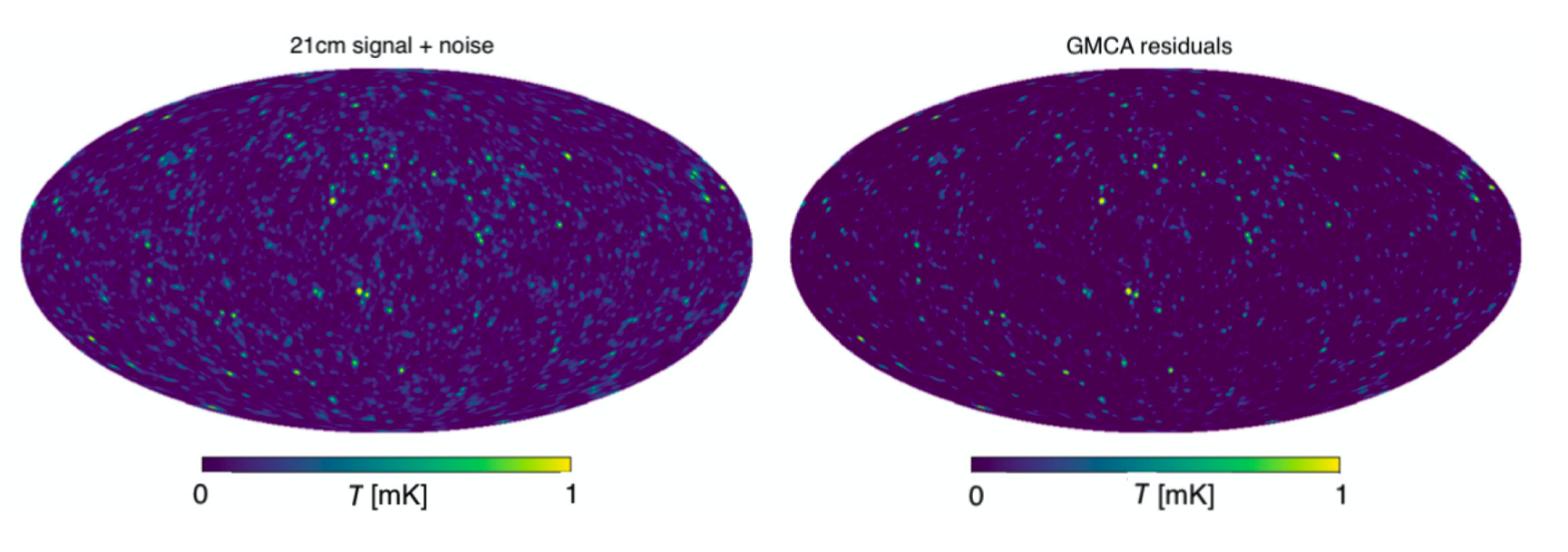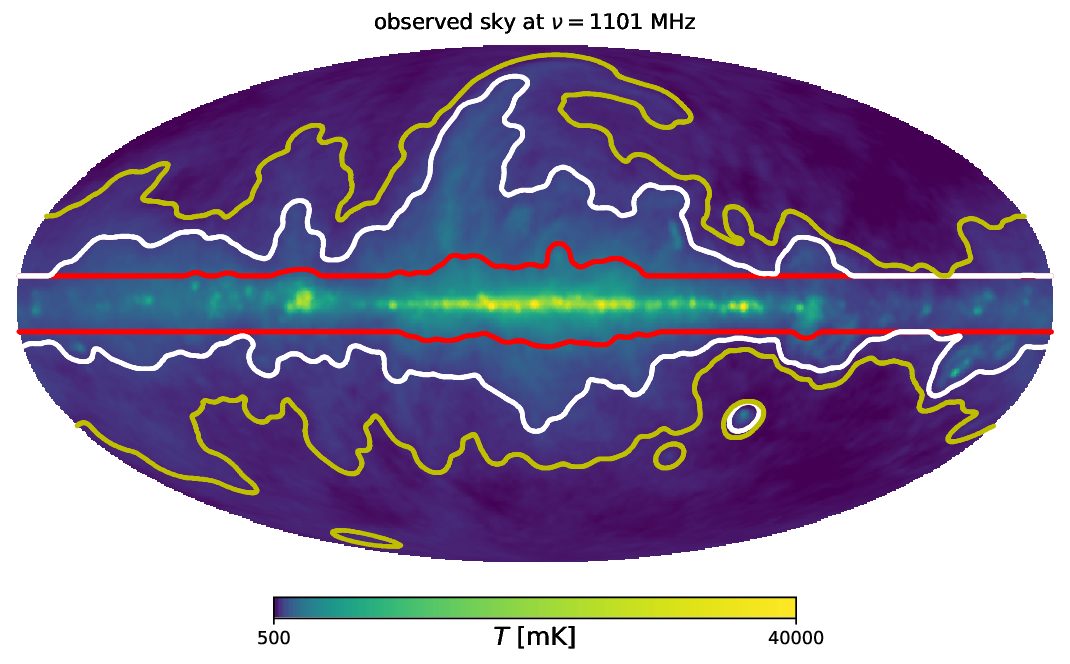21 cm intensity mapping has emerged as a promising technique to map the large-scale structure of the Universe. However, the presence of foregrounds with amplitudes orders of magnitude larger than the cosmological signal constitutes a critical challenge. In this work, we test the sparsity-based algorithm Generalised Morphological Component Analysis (GMCA) as a blind component separation technique for this class of experiments. We test the GMCA performance against realistic full-sky mock temperature maps that include, besides astrophysical foregrounds, also a fraction of the polarized part of the signal leaked into the unpolarized one, a very troublesome foreground to subtract, usually referred to as polarization leakage. To our knowledge, this is the first time the removal of such component is performed with no prior assumption. We assess the success of the cleaning by comparing the true and recovered power spectra, in the angular and radial directions. In the best scenario looked at, GMCA is able to recover the input angular (radial) power spectrum with an average bias of ∼5% for ℓ>25 (20−30% for k_ll ≳ 0.02 Mpc/h), in the presence of polarization leakage. Our results are robust also when up to 40% of channels are missing, mimicking a Radio Frequency Interference (RFI) flagging of the data. Having quantified the notable effect of polarisation leakage on our results, in perspective we advocate the use of more realistic simulations when testing 21 cm intensity mapping capabilities.

Code and demonstrative notebooks are available here and data-set to reproduce our results is available here.

